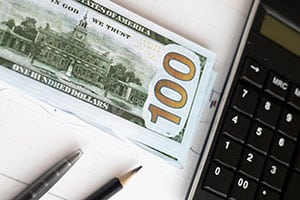According to the Occupational Safety and Health Administration (OSHA), “fall protection” (or lack thereof) is the single most frequently cited safety standard. Companies that don’t offer adequate protection to their workers against falls could be subject to fines and penalties. Of course, there’s good reason for this — in 2009, 605 workers died as a result of same-level and elevated falls, whereas another 212,760 workers suffered non-life-threatening injuries from falling on the job.
Construction experienced the highest rate of fatal fall incidents, while health services experienced the highest rate of non-fatal falls. Regardless of your industry/sector, though, you should take some additional precautions to ensure workers are safe and protected against falls.
One all-too-common cause of slip-and-fall incidents is from spilled chemicals and liquids. When workers fail to clean up spilled chemicals in a timely manner, it creates a dangerous scenario for other workers. An unsuspecting worker could step into a puddle of oil, for instance, losing his or her balance. It only takes a couple drops of oil or lubricant to turn an area of the floor into a slippy fall hazard, so make sure all spilled chemicals and liquids are cleaned in a timely manner.
Falls from elevation are typically prevented through use of guard rails and similar safety structures. If a construction site has an elevated catwalk, OSHA standards require it to have guard rails to protect against falls. For more details regarding the use of catwalk guard rails, visit OSHA’s official website here.
The CDC noted that work-related fall incidents are often attributed to “slippery, cluttered or unstable walking surfaces.” This may sound like common sense, but you would be surprised to find out just how many workplaces conduct their day-to-day operations with unsafe floors. Whether it’s debris, heavy machinery, power tools, lumber, etc., floors should have clean and clear paths defined strictly for walking. Allowing these areas to become cluttered creates a serious fall hazard for workers on duty.
“Circumstances associated with fall incidents in the work environment frequently involve slippery, cluttered, or unstable walking/working surfaces; unprotected edges; floor holes and wall openings; unsafely positioned ladders; and misused fall protection. Federal regulations and industry consensus standards provide specific measures and performance-based recommendations for fall prevention and protection. However, persistent unsafe practices and low safety culture across many industries define steady fall injury rates year after year,” wrote the Centers For Disease Control and Prevention (CDC).
 Slip-and-fall accidents can place a serious financial burden on a company. When a worker falls and suffers an injury while on the job, the company is responsible for paying his or her medical bills along with lost wages through Workers’ Compensation. This alone can cost businesses a good chunk of cash, but this is really just the tip of the iceberg when it comes to the true cost of slip-and-fall accidents in the workplace.
Slip-and-fall accidents can place a serious financial burden on a company. When a worker falls and suffers an injury while on the job, the company is responsible for paying his or her medical bills along with lost wages through Workers’ Compensation. This alone can cost businesses a good chunk of cash, but this is really just the tip of the iceberg when it comes to the true cost of slip-and-fall accidents in the workplace. In a previous blog post, we talked about some of the
In a previous blog post, we talked about some of the 